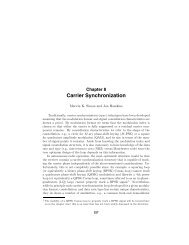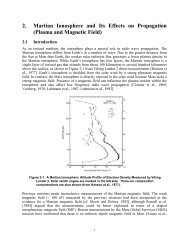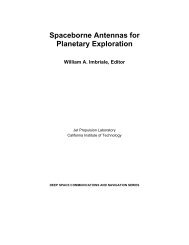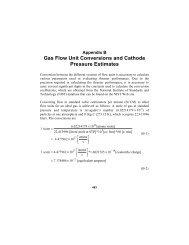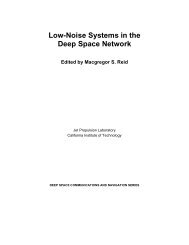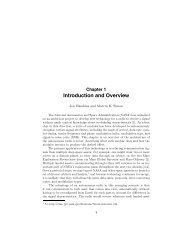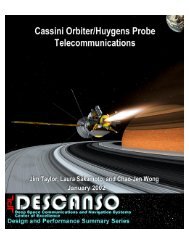Propagation Effects Handbook for Satellite Systems - DESCANSO ...
Propagation Effects Handbook for Satellite Systems - DESCANSO ...
Propagation Effects Handbook for Satellite Systems - DESCANSO ...
Create successful ePaper yourself
Turn your PDF publications into a flip-book with our unique Google optimized e-Paper software.
The models require the following inputs:<br />
a) Ground station latitude, longitude and height above mean sea<br />
level<br />
b) The earth-space path elevation angle<br />
c) The operating frequency<br />
6.3.2.1 ~c>bal Model Rain Attenuation Prediction Technique.<br />
6.3-1 gives the step-by-step procedure <strong>for</strong> applying the Global<br />
Figure<br />
Model. The steps are described in detail below.<br />
Step 1 - At the Earth terminal’s geographic latitude and<br />
longitude, obtain the appropriate climate region using Figure<br />
6.3-2. For locations outside the Continental U.S. and Canada,<br />
see Section 3.4.1. If long term rain rate statistics are<br />
available <strong>for</strong> the location of the ground terminal~ they should<br />
be used instead of the model distribution functions and the<br />
procedure of Section 6.3.3 should be employed.<br />
Step 2 - Select probabilities of exceedance (P) covering the<br />
range of interest (e.g.~ .OIJ .1 or 1%). Obtain the terminal<br />
point rain rate R (mm/hour) corresponding to the selected values<br />
of P using Figure 6.3.3, Table 6.3-1 or long term measured<br />
values if available.<br />
Step 3 - For an Earth-to-space link through the entire<br />
atmosphere, obtain the rain layer height from the height of the<br />
0° isotherm (melting layer) Ho at the path latitude (Figure 6.3-<br />
4). The heights will vary correspondingly with the<br />
probabilities of exceedance, P. To interpolate <strong>for</strong> values of P<br />
not given, plot HO (P) vs Log P and sketch a best-fit curve.<br />
Step 4 - Obtain the horizontal path projection D of the oblique<br />
path through the rain volume:<br />
HO-H 9;9210°<br />
D=—<br />
tanO<br />
6-23<br />
(6.3-1)





